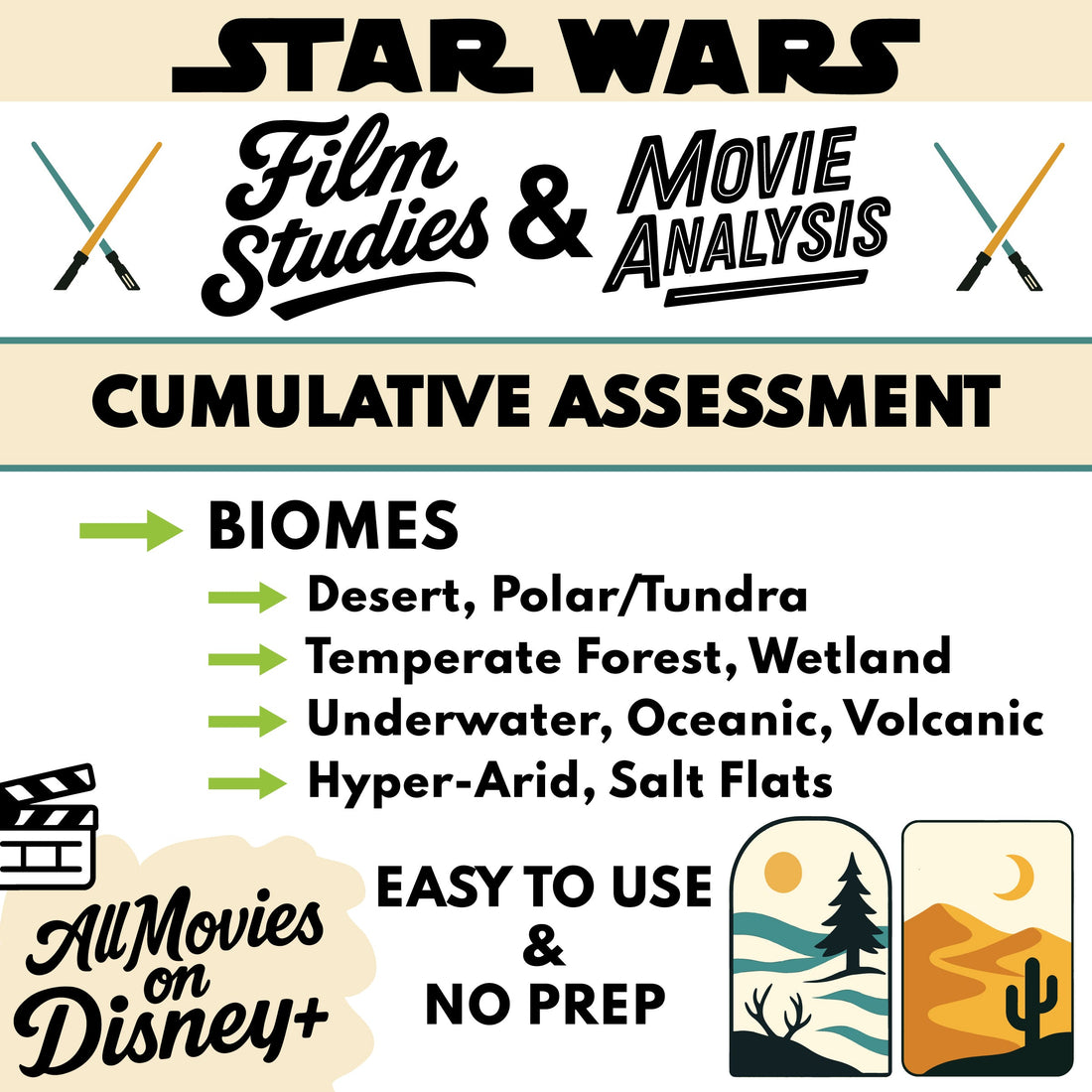
Teaching Biomes and the Environment Through Star Wars
Share
The Star Wars Saga Assessment — Biomes & Environment Focus (Grades 9–12) helps teachers integrate science concepts into film study. Students examine worlds such as Tatooine, Hoth, Endor, and Coruscant to identify abiotic and biotic factors, human/alien adaptations, and resource systems. This cross-curricular assessment extends STEM into media analysis. For broader coverage, the Complete 9-Week Curriculum includes this science focus alongside ELA and film literacy assessments.
Standards Connection
Aligned to NGSS cross-cutting concepts (structure and function, cause and effect) and CCRA.R.1 (citing evidence). These standards ensure students analyze Star Wars biomes through rigorous environmental science concepts while still practicing ELA evidence-based skills.
Lesson Flow
- Observation: Students track environmental details in selected scenes from desert, forest, tundra, and urban planets.
- Evidence collection: Worksheets prompt analysis of abiotic and biotic factors, adaptation strategies, and plausible resources.
- Comparison: Learners evaluate how cinematic shortcuts simplify or exaggerate real science.
- Written response: Students explain how one biome in the films “tracks with science” and where it departs.
Optional Extension (Teacher-Created)
Not included in the product PDF.
- Assign research on real-world analogs for each Star Wars biome (e.g., deserts of Tunisia for Tatooine).
- Create a student-designed Star Wars world that incorporates accurate biome science.
Teacher FAQ
Q: Is this only for science classes?
A: No. It can be used in ELA or interdisciplinary projects to reinforce evidence-based analysis.
Q: Does it include an answer key?
A: Yes. Sample notes and model responses are provided.
Q: How much time does it take?
A: The assessment is designed as a 9-week extension but can be shortened with clip-based viewing.
Related Star Wars classroom resources
- Star Wars Saga Assessment — Biomes & Environment Focus: connect science and film through biomes analysis.
- Complete 9-Week Curriculum: integrates biomes, music, cinematography, and all nine film guides.
- Episode IX — The Rise of Skywalker Movie Guide (FREE): urban Coruscant-style setting for teaching anthropogenic biomes.
Skills Addressed: identifying abiotic/biotic factors, evaluating adaptations, connecting fiction to science, writing explanatory texts, and cross-disciplinary discussion.